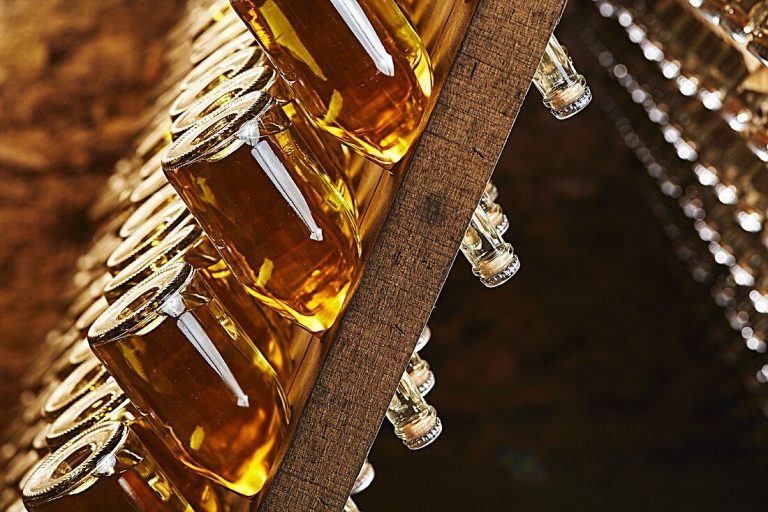
Mastering the Art of Champagne Production: From Traditional Riddling to Cutting-Edge Gyropalette Innovation
The gradual evolution of Champagne takes place during cellar aging, where yeasts contribute to unfolding the wine’s complexity and finesse. Over a minimum of 15 months, and often longer, bottles rest horizontally to ensure continuous contact between the yeasts and the wine. Horizontal positioning is crucial for sufficient yeast-wine interaction.
Upon achieving optimal maturity, bottles undergo a turning process to displace the sediment of spent yeasts, carefully guiding the lees towards the bottle neck. This riddling, or remuage, involves precise rotations, alternating right and left, quarter turns, eighth turns, or sixteenth turns. The angle of the bottle is gradually adjusted to point the neck downwards, facilitating the combination of suspended particles with heavier sediment. This meticulous stage is essential for obtaining a crystal-clear wine.
Historically, riddling methods varied. Early approaches involved sand-filled boxes, angled placement on three fingers of sand, or even placing bottles against each other. Breakages were common due to imperfect fermentation control and fragile glass.
The renowned pupitre, a wooden frame with angled holes, emerged in 1818, credited to Madame Clicquot. This precursor to automation allowed bottles to be set at different angles for effective riddling. Over time, innovations like metal clips and racks with angled holes further refined the process.
The transition to automation began with the crank-operated pupitre in 1920, followed by the Pupi-Matic in 1966. This machine marked a shift toward automated riddling, accommodating 240 bottles with programmable control.
The groundbreaking gyropalette, introduced in 1973, revolutionized riddling. Developed by Jacques Ducoin, Claude Cazals, Pierre Martin, and Georges Hardy, it handled 504 bottles simultaneously. This innovation reduced the riddling cycle, offering consistent and precise treatment for each bottle. The gyropalette, a cube-shaped device with galvanized cages, allowed for both horizontal and vertical positioning.
While automation improved efficiency, traditional manual riddling on pupitres is still taught and preserved by Champagne Houses. The process involves a skilled remueur manually turning bottles, a practice that has evolved with the introduction of the gyropalette. The latter has not only enhanced wine quality but also improved working conditions by eliminating demanding manual labor.
In conclusion, the gyropalette has become a cornerstone in modern Champagne-making, significantly shortening riddling cycles, and refining the overall winemaking process. Despite automation, traditional savoir-faire is still cherished, ensuring a harmonious blend of innovation and heritage in Champagne production.
(Note: The provided text incorporates SEO-friendly elements by emphasizing key terms such as remuage, pupitre, and gyropalette, while maintaining the informative content on Champagne-making techniques.)